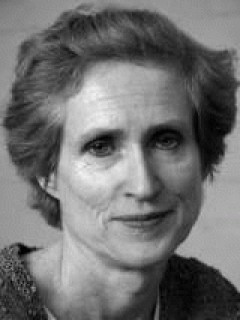Having volunteered to review a Spark evening about trance (Deeper …. and deeper … how trance gets to the bottom of brands), I was a little concerned to read that it would include practical trance-inducing sessions. Would I wake up to find myself leaving at the end of the evening without a clue what had actually happened during the previous two hours? If so, it would surely be the shortest review ever to appear in In Brief!
Digging deep into the mind
Luckily, there was little danger of this. Lisa Morgan (long time quallie, Master NLP practitioner and certified hypnosis trainer) uses trance as a technique within qualitative research to dig deeper into respondents" memories, feelings and expectations.
As she explained, to her captivated audience, trance is just an altered state of consciousness, and one which we have all probably experienced without realising it. Have you ever found yourself driving down the motorway and realising you can't remember passing the last junction? Or sitting on the tube and not being able to recall using your Oyster card at the station?
In both cases, your brain has probably just tuned out from your external surroundings and become temporarily focussed within. In such a state, it is possible to access "the thought behind the thought", as Lisa put it. This can be extremely helpful in research as memory is mindstate dependent.
Processing power
In fact, the processing power of the unconscious mind is vastly more powerful than that of the everyday, conscious mind: about 200,000 times more powerful, according to academic estimates. And it is the unconscious mind that we access (to some extent) when in trance. Thinking about this more practically, it could possibly explain why I've had some of my best thoughts (work or otherwise) when I've been absent-mindedly doing something completely different — like washing the dishes!
Hypnosis is the process of putting someone into a trance, and it involves quite different parts of the brain to the process of using your imagination, which is something we are all quite used to. However, some Spark attendees did find the process of inducing a trance fairly familiar. Have you ever asked respondents to close their eyes and relax, before carrying out a memory or projective exercise?
After Lisa's explanations (and reassurance that this was all perfectly safe), we divided into pairs and were asked to have a go at trying to put each other into a light trance. Outline scripts were provided for us to use, along with unfocussed "soft eyes" and physical mirroring behaviour (or "pacing").
We tried a Relaxation Induction process and then a Dynamic one, before moving on to use a light trance to help explore brand usage recall. For this exercise, the trance inductee (who did not know the brand in advance) was asked to describe their last contact with it in detail, with additional info being prompted by appropriate follow-up questions.
Feedback after each exercise suggested that the approach was working, even for those of us who had been a bit sceptical initially. The power of suggestion (very important when inducing a trance state) was also demonstrated very effectively in a group exercise.
Relaxation time
We held out our hands in front of us and closed our eyes. Lisa relaxed us, and then told us that we had a heavy weight tied to one hand and a number of helium balloons to the other. When we finally opened our eyes after several minutes of this suggestion, it was quite dramatic to see how many of us had moved our hands up or down in response.
Throughout the evening, Lisa gave us fascinating examples of how she had used trance successfully within qualitative research. Children in Japan were helped to talk about what playing would be like in the future. Trance increased the quality of feedback when respondents described what it felt like (physically and emotionally) to eat a hamburger. Lisa has also used trance and hypnosis in one-on-one personal sessions, including with Cumbria's most rational and obdurate farrier!
Relevant techniques
So will any of us use these techniques in the future? A quick check with some fellow attendees confirmed my own feelings that they could well be applicable to our industry. Freelancer Debra Crush thought Lisa's approach was "very relevant, especially when exploring and developing brands".
Amy Hawthorn of Sundance noted that trance-related methods effectively take our tool bag of projective techniques one step further. For while many of these are already designed to enable us to identify and explore associations with brands or ideas, Lisa's trance techniques will help us "get further than the obvious answers that our conscious minds are willing to take us" and Amy saw herself using them "perhaps with a brand or category audit in some one-on-one interviews".
Sensory hub
Several of us did wonder during the evening how clients would react to the idea of using trance techniques in either depth interviews or group discussions — not to mention our respondents!
Perhaps a more acceptable, less frightening way of describing this approach is simply to call it a technique that can help access a person's right brain, and get beyond the rationality and self censorship of the left. This can be very important when exploring brand associations in research for, as Lisa reminded us on the night, your "unconscious mind is your sensory hub".
Leaving the inside of our heads for the more practical side of the evening, Creative Venue provided a great space for the session and made us most welcome. Lisa also left us with details of the creative hypnosis courses she runs in London and Cumbria (where she is based) for both businesses and individuals.
Readers interested in this topic should visit www.futureseeing.com for more information.


